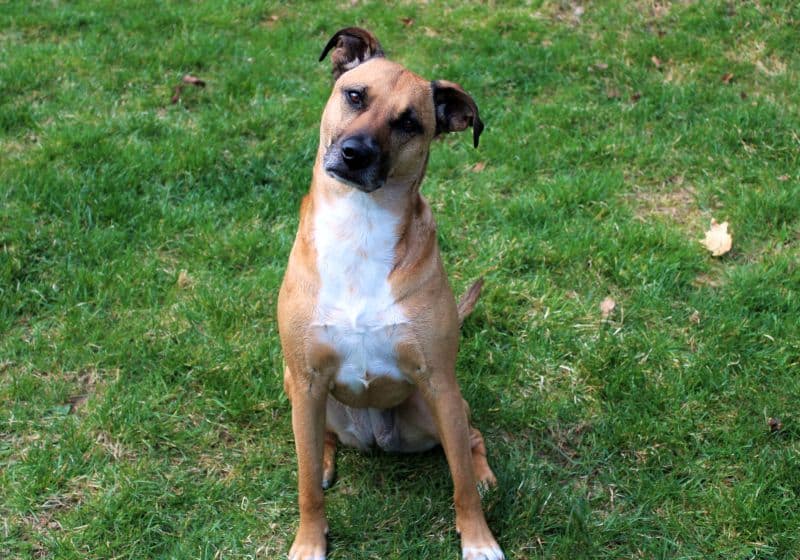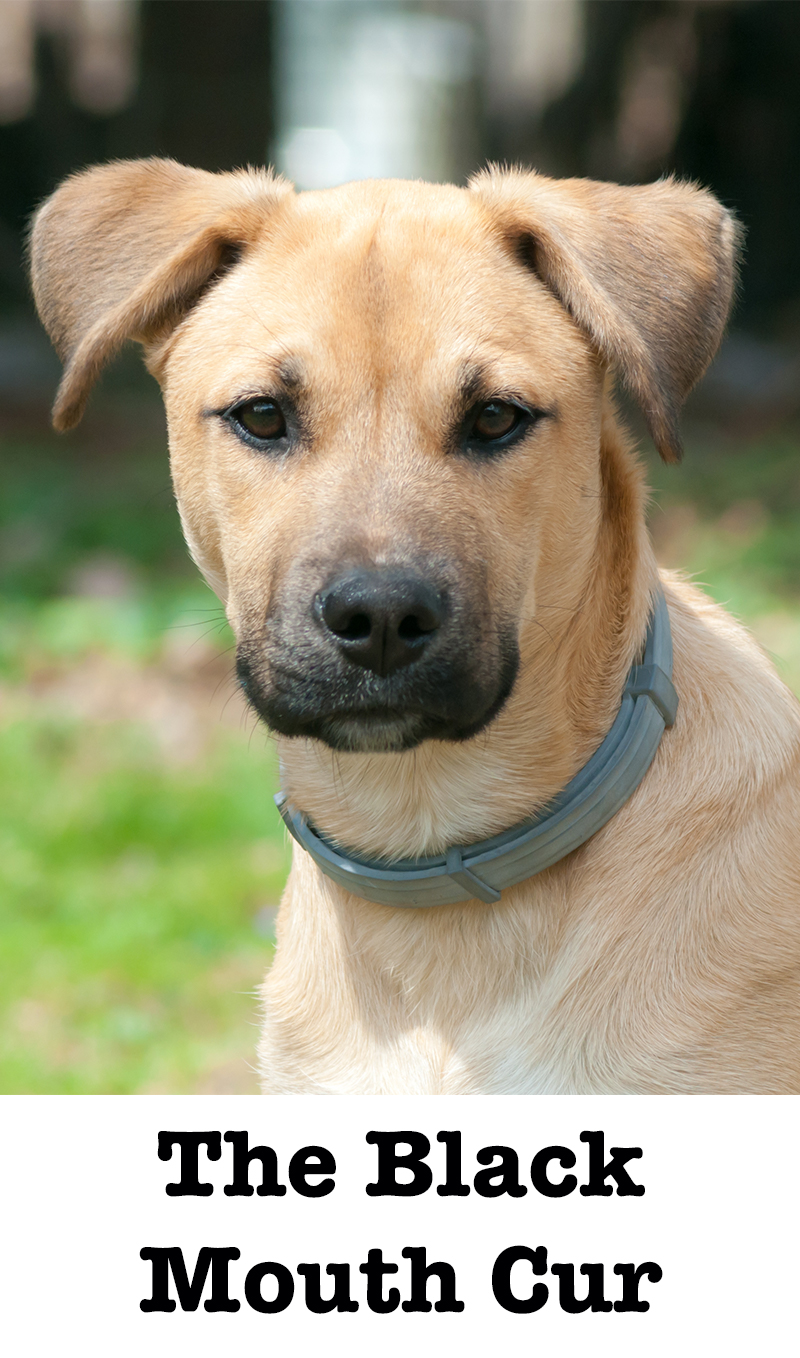History of the Black Mouth Cur Dog
The history of the black mouth cur dog is relatively muddled.
They’re known to have lived in the southeastern United States since the 1800s, but nobody knows exactly where or when the first ones were produced. Many breed advocates point to Tennessee or Mississippi in the southern United States as the most likely birthplace of the breed, but details of the black mouth cur’s origin remain elusive.
They were likely developed to be a multi-purpose working dog, and they excel at most of the basic tasks farm dogs are expected to perform.

Black mouth cur dogs are capable of herding livestock, they make excellent tracking and hunting dogs, and they are courageous and capable guardians who won’t hesitate to defend their home and family from perceived threats.
The black mouth cur accompanied the pioneers who headed west to settle new lands and eventually became relatively common throughout the country. In fact, Old Yeller is often thought to have been a black mouth cur (although the author never explicitly states such, and the dog who played Old Yeller in the movie was a retriever mix).
Despite their popularity in the U.S., black mouth curs have never become very popular overseas – they tend to be a stateside favorite. Ironically, these all-American dogs aren’t recognized by the American Kennel Club (AKC).
This is likely due in part to the back mouth cur breed’s variability and the fact that different breeders often strive to produce dogs with different characteristics. For example, black mouth cur dogs bred as pets or for protective purposes usually reach the upper end of the breed’s size range, while those bred to tree raccoons and other prey are usually less than 60 pounds.
The United Kennel Club does recognize the black mouth cur, placing them in the scenthound group.
Black Mouth Cur Health and Grooming
Black mouth curs are typically very healthy dogs, and they don’t suffer from many common diseases or disorders. This may be due in part to the large genetic pool from which the breed originated.
Nevertheless, the black mouth cur breed appears predisposed to a few health problems, including:
The black mouth cur is a dream dog for owners who don’t want a dog with a high-maintenance coat. They don’t require any elaborate grooming services – a weekly brushing to get out loose hairs and a bath every month or so should keep their coat healthy and looking great. They don’t shed or drool very much either, so they may be a good option for allergy sufferers.
Black mouth curs can, however, be pretty filthy pups if provided with lots of time outdoors. Like many other breeds, they seem to love coating themselves in dirt, mud, and anything disgusting they can find lying around on the ground.
And if they are allowed to do so immediately before coming inside and jumping on the couch, all the better!
You will need to trim your black mouth cur’s nails regularly and provide him with an appropriate preventative flea treatment, as you would any other dog breed.
Some owners note that black mouth curs seem very susceptible to mange, but, rather than being a tendency of the dog breed, this may have more to do with the way working black mouth curs are often kept outside, in outdoor kennels.
This further illustrates the importance of implementing good flea-prevention practices.
Do Black Mouth Curs Make Good Family Pets?
The decision to purchase or rescue a dog ultimately depends on you and your family. These dogs need regular exercise. They may not be well suited for owners with very small backyards or sedentary lifestyles. This breed is a good choice for sporting owners who plan to hunt or compete with their dogs.
The Black Mouth Cur temperament is typically stable, non-aggressive, and loyal. So they can also be good family dogs, as long as they are socialized around other pets and children. See if you can find some near you so that you can spend some time with them. This is a great way to see if you get along with the general breed temperament.
Sporting dog shows are a good place to start, or breed enthusiast groups. You can also use those opportunities to ask more questions about the breed from people who have firsthand experience owning, handling, and training them.
Rescuing a dog can be very rewarding, and comes with the added benefit of knowing you are helping an animal in need. This breed is still not hugely popular at the moment. But, many owners may give these dogs up for adoption if they realise they can’t keep up with their exercise and mental needs. So, don’t lose hope if you’re keen to adopt a BMC.

Black Mouth Cur: Everything You Need To Know – Is It the Right Dog for You?
Proud parent of a Black Mouth Cur who’s looking to learn more or thinking about getting a Black Mouth Cur dog? Learn the facts about this breed here: